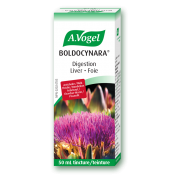A.Vogel search
When the internal search is activated, personal data such as your IP address is transmitted to our search engine Cludo. Data is thus transferred to a third country. Please click here if you want to display the internal search. You can find more information on data protection here: Privacy policy.
Taraxacum officinale WEB.
Dandelion
History
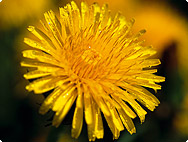
Taraxacum officinale WEB. Dandelion Official designation Dandelion leaves and root Family Asteraceae (= Compositae) Common names Priest's crown Swine's snout History According to the Arab physician, Avicenna (Ibn Sina), the name Taraxacum developed around 1000 AD from the Arab-Persian tharakhchakon via the Middle Latin. Officinale is New Latin and means ‘of pharmaceutical value‘. It derives from the Latin officina (=’workshop’, later ’pharmacy’). Little is known of old names for the plant; it cannot be positively identified in the writings of antiquity or the early Middle Ages. The prevalence of dandelions in later centuries could well be due to the spreading of liquid manure on fields as a fertiliser, which encouraged their growth. Of all native plants, the dandelion has the greatest number of common names more than 500 are known and have been recorded. The French name pissenlit (’bed wetter’) refers directly to the plant's diuretic effect. In 1546, Hieronymus Bock described this effect. In the same century, the German pharmacist Jakob Dietrich von Bergzabern, (also known as Tabernaemontanus), recommended this plant for problems with the stomach and liver, as it eases constipation, expels urinary wind and greatly increases urine flow.
Botanical characteristics
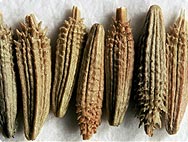
The dandelion, which can grow to between 10cm and 50cm in height, is a very hardy plant with a root system resembling a tap root. The dark green leaves emerge from a basal rosette and are lanceolate, coarse and sharply dentate. A hairless, tubular stalk rises from the leaf rosette. The stalk bears a yellow flower head with tongue shaped blossoms. Numerous individual fruits bearing a stemmed ’parachute‘ of fine hairs (= pappus) are arranged in a ball. It takes the lightest of winds to disperse them. The entire plant contains a bitter-tasting milky juice. The dandelion flowers from March to October.
Habitat
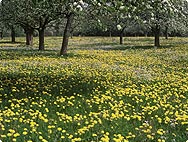
The dandelion can be found all over the world, growing in all temperate climates at elevations up to 2000 metres. It thrives particularly well on rich meadows, sparse forests, roadsides and on waste dumps.
Preparation
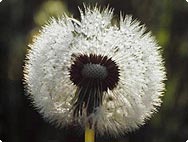
A.Vogel uses an alcohol extract of both the fresh roots and leaves, harvested before the plant flowers. The plants are gathered wild on farms that use organic methods of cultivation or are taken from our own organic cultivation. A tea prepared from roots harvested in the spring or autumn (Fall) is also common. The young leaves, collected in March, make a tasty salad. When eaten, it should be remembered that fresh dandelion has a weak sensitising effect and, in rare cases, can trigger contact allergies. The inulin-rich root was at one time harvested in the late summer, roasted and included in coffee substitute mixtures.
A.Vogel Blog – Natural and Healthy
Inspiration for a healthy life!




